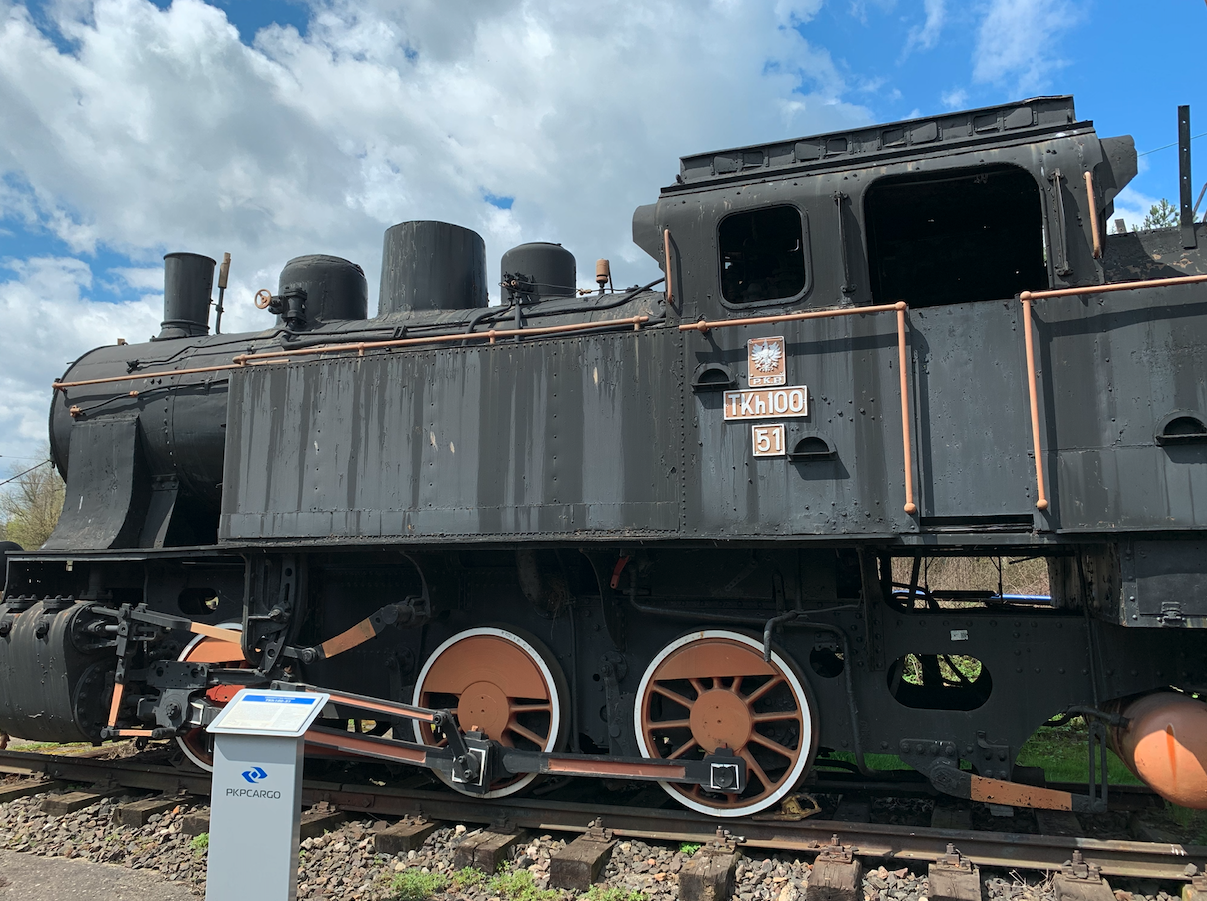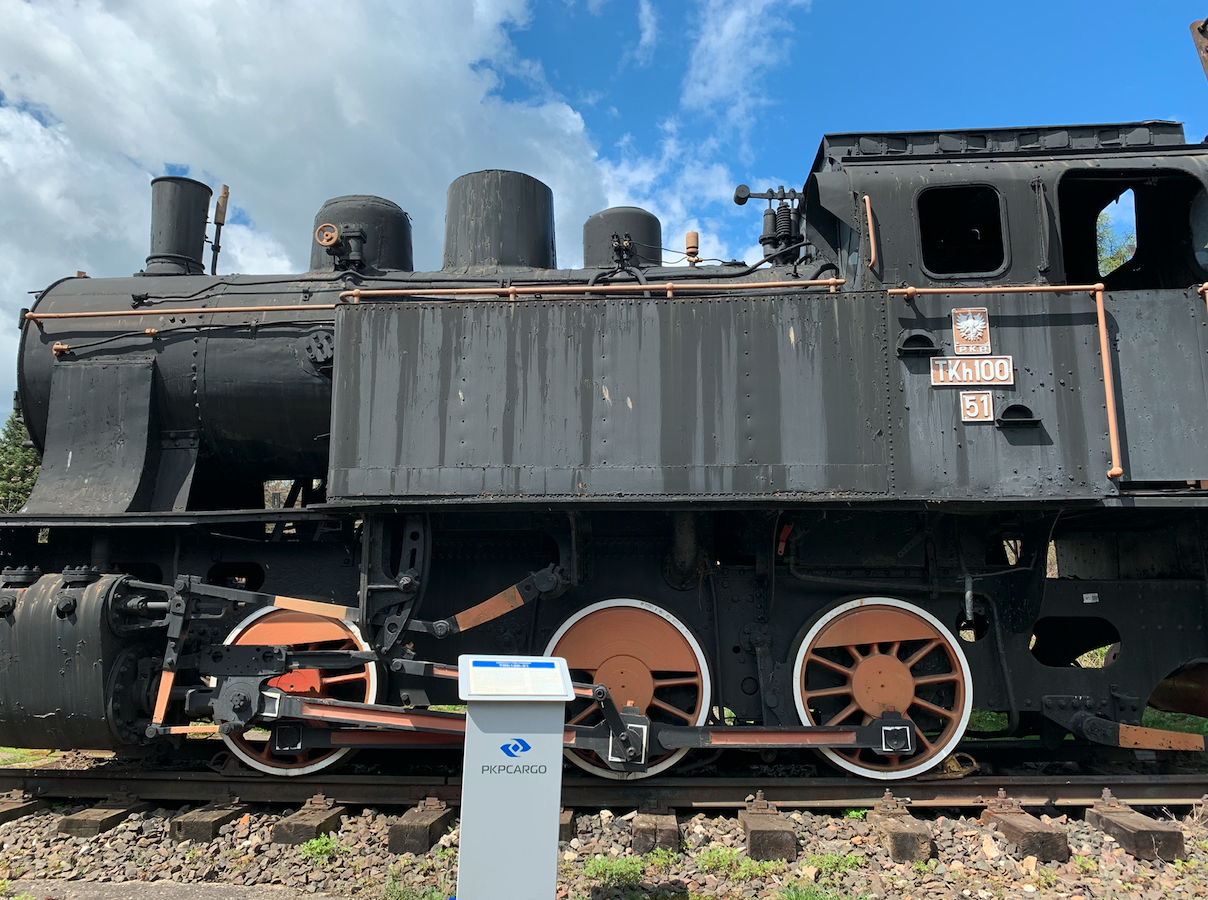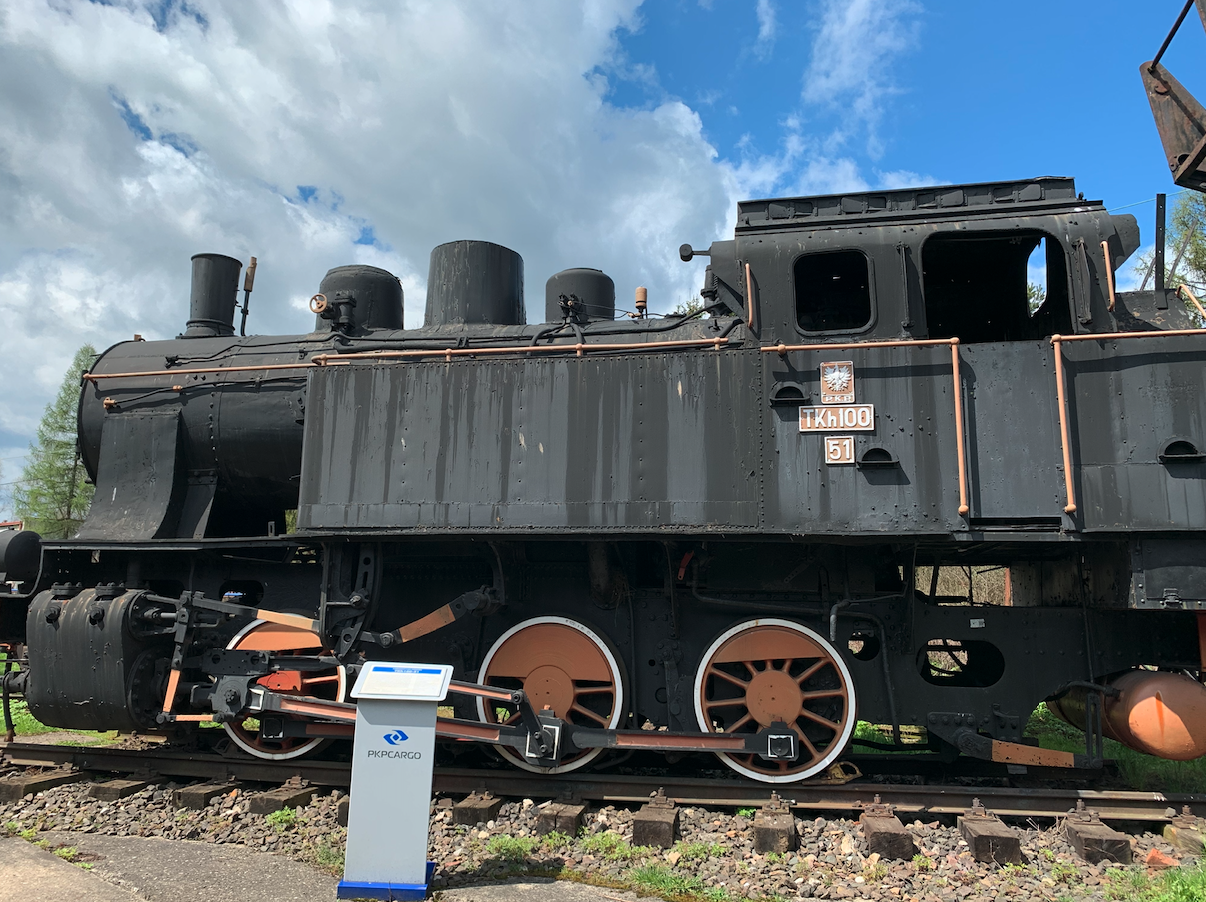Chabówka 2021-12-19
Steam locomotive TKh100-51 in Chabówka.
In the 1880s, there was a clear division into line locomotives and industrial steam locomotives. They differed significantly in size, design and technical parameters. The newly designed and built industrial steam locomotives remained skimmers with the C n2t, C h2t and, less frequently, D axis system. These are the international designations of the UIC system, as well as the German ones. In Poland, our designation for three driving axles is a small letter "h" in the designation of a steam locomotive, while for four driving axles it is a small letter "p".



Although they were generally industrial locomotives, they could be found on local routes with a length of about 50 km. Locomotives of this type were produced between 1880 and 1930 by various manufacturers. The characteristic features of these steam locomotives, in addition to the running gear, are: compact structure, short length, low weight, two steam engines, water tanks located on the sides of the boiler, coal in a box located at the rear of the vehicle, no heating system for towed wagons and maximally simplified operation locomotives by the crew. As for the weight, it increased to 40-50 tons compared to the first shunting locomotives.
In Poland, the TKh100 steam locomotives are the collective designation of the few standard-track steam locomotives of the C-axis type, used by PKP since 1945. The TKh100 series includes 65 different locomotives, mainly post-German, originating, among others, from nationalized local railways.
However, these locomotives did not arouse admiration among Polish railwaymen. They were all very worn out. Before they were put into service, they had to undergo a general renovation. Many components had to be added in Polish factories. It all took a long time. If these locomotives have already entered service, they ended their work in the 1960s.
Currently (2021) there are two locomotives of this type in Poland: TKh100-45 from 1938, exhibited at the Railway Museum in Kościerzyna. The TKh100-51 locomotive from 1928 is located in the Rolling Stock Open-Air Museum in Chabówka.
Steam locomotive TKh100-51.
The TKh100-51 steam locomotive, serial number 11 688, was built in 1928 in Germany at the Orenstein & Koppel AG Berlin-Drewitz factory. The Orenstein & Koppel ("O&K") factory was founded in 1876 and specialized in the production of rail vehicles, escalators and heavy construction equipment. O&K withdrew from the rail industry in 1981. Its shares in the production of construction equipment were sold to the FIAT Group in 1999.
The steam locomotive belonged to the so-called standardized type ELNA 4, which were produced for local railways. The locomotive went to the Rosenberger Kreisbahn carrier and served the Olesno - Praszka route, in the Prussian partition. The locomotive was then marked "2". It was a time when this line was transformed from the narrow gauge to the standard gauge.
There was also a second locomotive of the same type, marked "1", on this line. After the Second World War, this steam locomotive was delivered to East Germany, with the number 89 954.
After the Second World War, the locomotive "2" was taken over by the Polish State Railways (PKP) and was given the Polish designation TKh100-51. The locomotive was overhauled. It was not until October 1951 that the locomotive was sent to work in Gdynia Grabówek. From January 1954, the locomotive worked at the Gdańsk Zaspa locomotive depot, then from October 1954 in Toruń, from July 1960 in Malbork, from October 1960 at MD Zajączkowo Tczewskie and served there until April 1967. On September 15, 1968, the vehicle was removed from the state. The locomotive was left aside, and after a few months it was transferred to the museum in Warsaw, but the locomotive did not go there. The locomotive was on the slope in Tarnowskie Góry, Miasteczko Śląskie and Oświęcim, gradually deteriorating. In 1998, the vehicle was transferred from Oświęcim to Chabówka. In 1999, the locomotive was repaired and repainted.
T-T data of the TKh100-51 steam locomotive:
1928 year of production. C axis arrangement n2t, Service weight 44.5 tons. Length 9.50 m. Wheel diameter 1.20 m. Pressure in the boiler 12 atm. Working with superheated steam. The heating area of the boiler is 80.1 m2. The grate area is 1.4 m2. Water supply 5.5 m3. Coal stock of 1.4 tons. Design speed 55 km / h.
Written by Karol Placha Hetman
